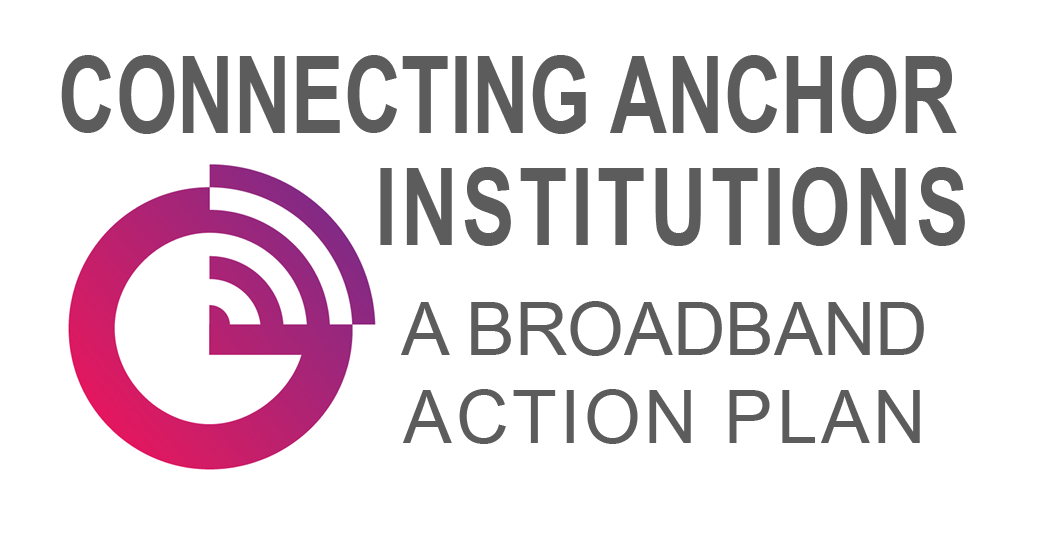Community Anchor Institutions and Residential Broadband Adoption
Summary
Residential broadband adoption has stalled – about one-third of American homes still do not subscribe to landline broadband service. CAIs can help increase residential broadband adoption in many ways. CAIs can provide digital literacy training, educate consumers about government programs to promote broadband adoption, lead community planning efforts, and, in some cases, provide wireless broadband services directly to consumers. For these efforts to succeed, however, policymakers must provide CAIs and their community partners with locally customized resources to meet the needs of specific populations.
Read Full Policy PaperRecommendations for Action
- Federal, state, and local governments should develop broadband plans that specifically identify and support the roles that CAIs play in promoting broadband adoption. The plans should recognize that CAIs can:
- Distribute information to consumers about how to sign up for the Lifeline program and other programs that make broadband more affordable;
- Serve as broadband providers for low-income populations;
- Provide digital literacy training; and
- Lead and convene local broadband planning efforts.
- The federal government should 1) create a National Digital Literacy Corps, as recommended by the National Broadband Plan, and 2) leverage the work and assets of CAIs in promoting digital literacy.
- The FCC and states should consider increasing the amount of the Lifeline subsidy for low-income families who need an affordable, high-capacity wireline broadband service at home, and identify CAIs’ role in promoting these programs.
- Federal, state, and local governments should facilitate and/or support broadband adoption data collection and research to aid the strategic work of CAIs and their partners. CAIs can provide key information about specific populations that can help to target broadband adoption efforts to meet the needs of local constituencies.
- Local and state governments should designate staff positions tasked with identifying broadband adoption resources and coordinating regional broadband adoption efforts that include CAIs. These staff can recognize CAI leaders in each state who are best suited to serve on task forces, or engage in broadband planning, to promote broadband adoption and digital literacy.
- The federal government should consider allowing schools and libraries that receive E-rate support to use a portion of their broadband capacity for community “hot spots” and for residential broadband traffic, as long as E-rate funds are not used to pay for these additional services.
Examples/Case Studies
MoreAdditional Resources
- Bertot, J.C., Real, B., Lee, J., McDermott, A.J., & Jaeger, P.T. 2014 Digital Inclusion Survey. Data and trends in the provision of Internet access and public access computing by public libraries to their surrounding communities. http://digitalinclusion.umd.edu/
- National Telecommunications and Information Administration. Broadband Adoption Toolkit. May 2013. Highlights activities in awareness and outreach; home computers and broadband service; training planning and delivery; and curriculum and relevant content. http://www2.ntia.doc.gov/files/toolkit_042913.pdf
- John Horrigan and Maeve Duggan. “Home Broadband 2015.” December 21, 2015. The latest statistics on home broadband adoption. http://www.pewInternet.org/2015/12/21/home-broadband-2015/
- Colin Rhinesmith, Digital Inclusion and Meaningful Broadband Adoption Initiatives, January 2016. Findings from a national study of digital inclusion organizations that help low-income individuals and families adopt high-speed Internet service. https://www.benton.org/inclusion-adoption-report
- Angela Siefer, Katherine Bates, Colin Rhinesmith. “Libraries Increasing Role in Broadband Adoption.” January 2016. With library systems increasingly prioritizing equitable access to the Internet and digital literacy training, the role 21st century libraries serve in promoting digital inclusion has become more prominent. https://www.benton.org/initiatives/libraries-broadband-adoption
- Building Digital Communities: A Framework for Action. January 2012. A resource for fostering digital inclusion throughout the United States. https://www.imls.gov/assets/1/AssetManager/BuildingDigitalCommunities_Framework.pdf
- The Consortium for School Networking Digital Equity Toolkit. February 2016. Student access to robust digital tools is key to their success as 21st century citizens. Yet many students from economically disadvantaged families have limited access to these tools both at school and at home. http://www.cosn.org/focus-areas/leadership-vision/digital-equity-action-agenda
About the Author
Angela Siefer is the Director of the National Digital Inclusion Alliance (NDIA). Angela envisions a world in which all members of society have the skills and resources to use the Internet for the betterment of themselves and their communities. Since 1997, Angela has worked on digital inclusion issues with local community organizations, the National Telecommunications and Information Administration, state governments, and the Schools, Health & Libraries Broadband (SHLB) Coalition. This work led Angela to co-found the National Digital Inclusion Alli- ance, a unified national voice for local technology training, home broadband access, and public broadband access programs. A profile of her written work is at angelasiefer.com.
Policy Papers
Latest Updates From Twitter
Action Plan Authors
Amelia Bryne
Kelleigh Cole
Joanne Hovis
Tom Koutsky
Blair Levin
Christine Mullins
Angela Siefer
Gina Spade
John Windhausen
Steering Committee
Larra Clark, American Library Association
Adrianne Furniss, Benton Foundation
Kevin Taglang, Benton Foundation
Bob Collie, ENA
Lil Kellogg, ENA
Rex Miller, ENA
Susannah Spellman, Internet2/USUCAN









 Download Full Action Plan
Download Full Action Plan